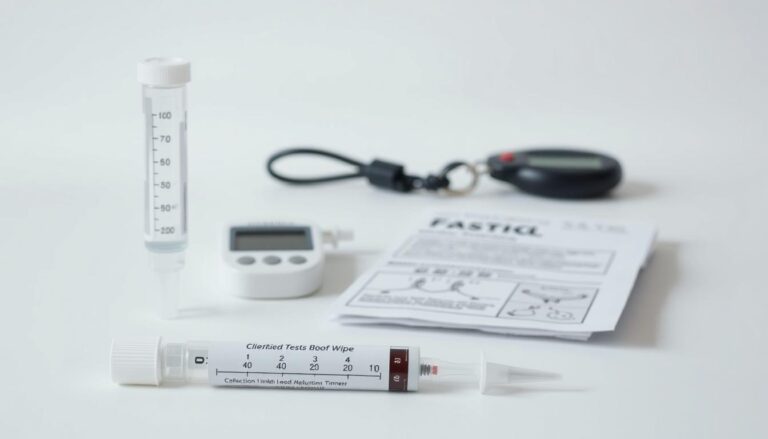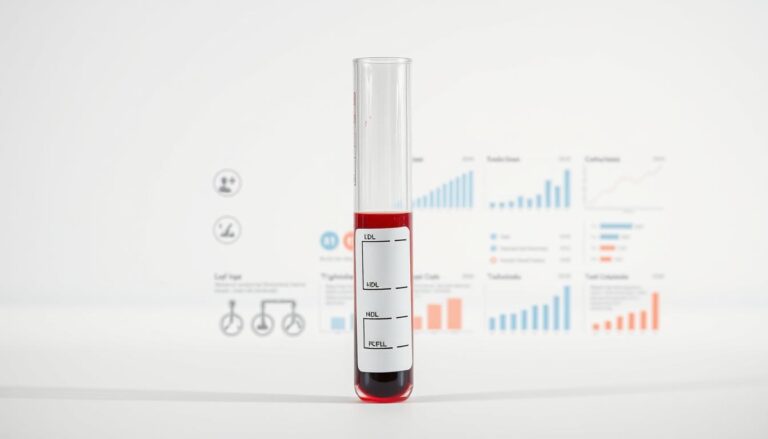Complete Blood Count (CBC) Test Results: Understanding Your Report
When we get our complete blood count (CBC) test results, we often wonder about the numbers and terms. What does it mean if our CBC test report is normal or abnormal? How can we use these results to understand our health? CBC test values help diagnose and monitor health issues like anemia, infections, and blood disorders.
By understanding our CBC blood test results, we can better grasp our health status. This knowledge helps us make informed decisions about our care.

So, what does a CBC test measure, and how can we use it to take control of our health? We will explore the world of CBC test report interpretation. We’ll see what the test measures and how to use the results to make informed decisions about our care.
By the end of this journey, we will confidently navigate our CBC test values explanation. We will use it to improve our overall well-being.
Understanding the Basics of CBC Test Report Interpretation
Interpreting complete blood count results is key. A CBC test analysis guide helps you understand your test results. It shows the levels of red blood cells, white blood cells, and platelets in your blood.
To understand a CBC test report, you need to know its parts. This includes red blood cell count, hemoglobin levels, and hematocrit. These values change based on your gender and age. For example, the normal range for red blood cell count is different for men and women.
A complete blood count can help find and track health issues like anemia, infections, and blood disorders. Knowing the CBC report’s components helps you understand your results. This way, you can work with your doctor to plan your treatment.
Here’s a quick look at the normal ranges for some CBC test components:
| Component | Normal Range |
|---|---|
| Red Blood Cell Count (males) | 4.35 trillion to 5.65 trillion cells/L |
| Red Blood Cell Count (females) | 3.92 trillion to 5.13 trillion cells/L |
| Hemoglobin (males) | 13.2 to 16.6 grams/dL |
| Hemoglobin (females) | 11.6 to 15 grams/dL |
By using a CBC test analysis guide, you can be more involved in your healthcare. This way, you can make better decisions about your treatment.
Breaking Down CBC Test Parameters and Normal Ranges
Understanding cbc test results is key. It involves analyzing different parameters and their normal ranges. This helps spot any health issues. Knowing about red blood cell count, hemoglobin, white blood cell count, and platelet count is important.
A guide for interpreting cbc lab results is very helpful. For example, normal red blood cell counts are 4.35 to 5.65 million/mm³ for men and 3.92 to 5.13 million/mm³ for women. Hemoglobin levels should be between 13.0 to 16.0 g/dL for men and 11.5 to 15.5 g/dL for women. Knowing these ranges is vital for accurate analysis.
Other important parameters include white blood cell count and platelet count. White blood cells should be between 5,000 to 10,000/mm³. Platelets should be between 150,000 to 400,000/mm³. Understanding these ranges helps you make sense of your test results and spot health issues.
When looking at cbc test results, remember a few key points:
- Red blood cell count and hemoglobin levels
- White blood cell count and differential
- Platelet count and mean platelet volume
- Reference ranges vary by age, sex, and other factors
Common Abnormalities in CBC Test Results
We often get our CBC test results without knowing what they mean. Complete blood count analysis is key in spotting health issues. It’s important to know what common abnormalities in CBC results mean.
Abnormal CBC test results can be due to many things. For example, high red blood cell counts might mean polycythemia vera. Low counts could point to anemia. The Mayo Clinic says diet, activity, and hydration can also affect CBC results.
- High white blood cell counts, which may indicate infections or malignancies
- Low white blood cell counts, which can be associated with autoimmune diseases or bone marrow disorders
- Abnormal levels of red blood cells, hemoglobin, or hematocrit, which may indicate dehydration, anemia, or heart disease
It’s key to talk to a healthcare provider about abnormal CBC test results. By understanding CBC test values and recognizing common abnormalities, we can take steps to address health issues. Complete blood count analysis helps diagnose blood diseases, infections, and immune system disorders. Working with a healthcare provider is essential to interpret our results and plan further testing or treatment if needed.
Conclusion: Taking Action on Your CBC Test Results
Understanding your complete blood count (CBC) test results is key to good health. Knowing the normal ranges helps spot problems early. This way, we can take steps to keep or improve our health.
If your CBC shows signs of anemia, infection, or other issues, talk to your doctor. They can explain the results, find the cause, and suggest what to do next. Working with your doctor helps you tackle health concerns and get better.
It’s also important to remember that some people might have values outside the “normal” range without being sick. So, look at your whole health, not just the numbers. This way, we can take charge of our health and make smart choices for better results.







